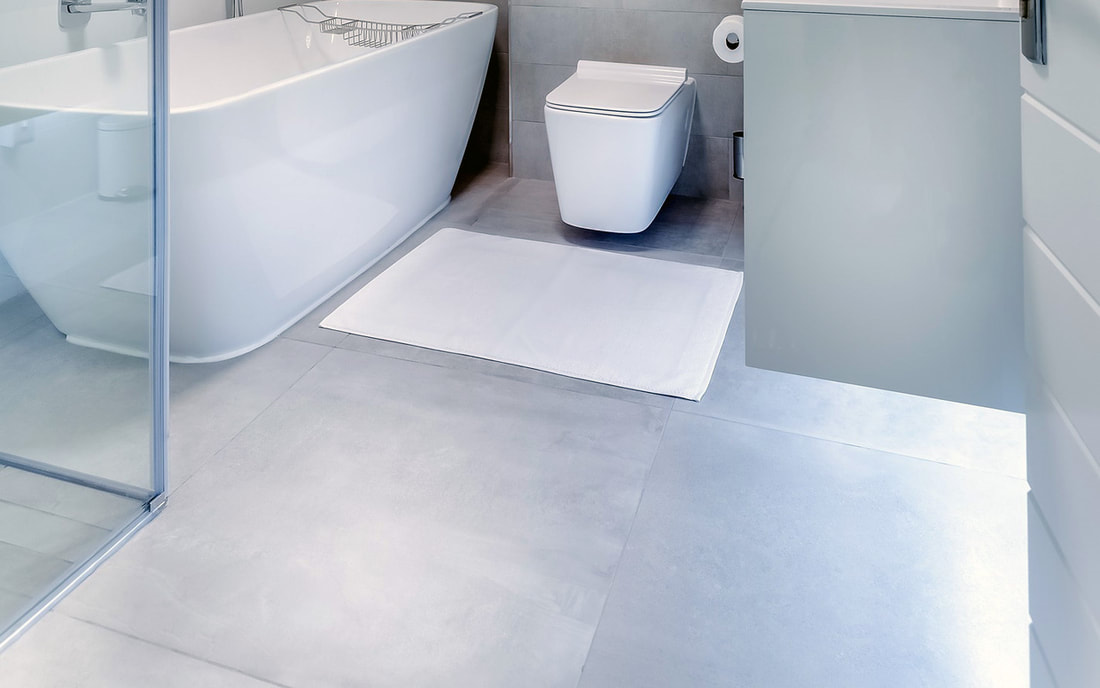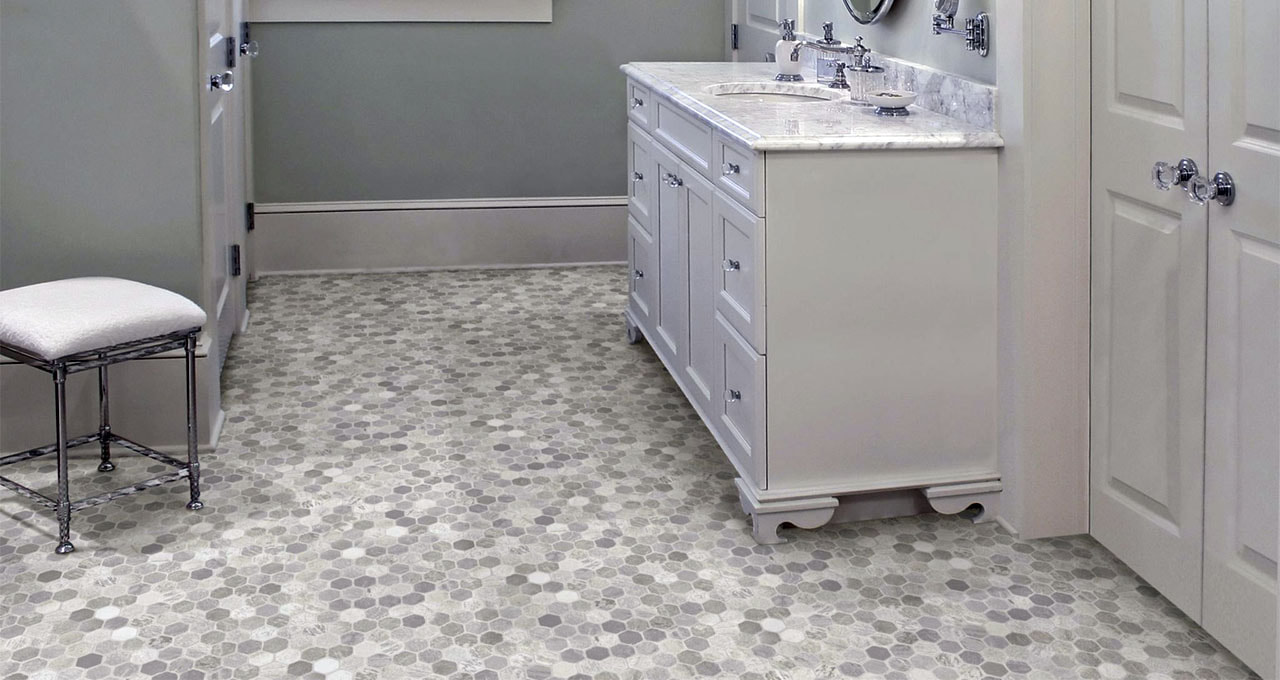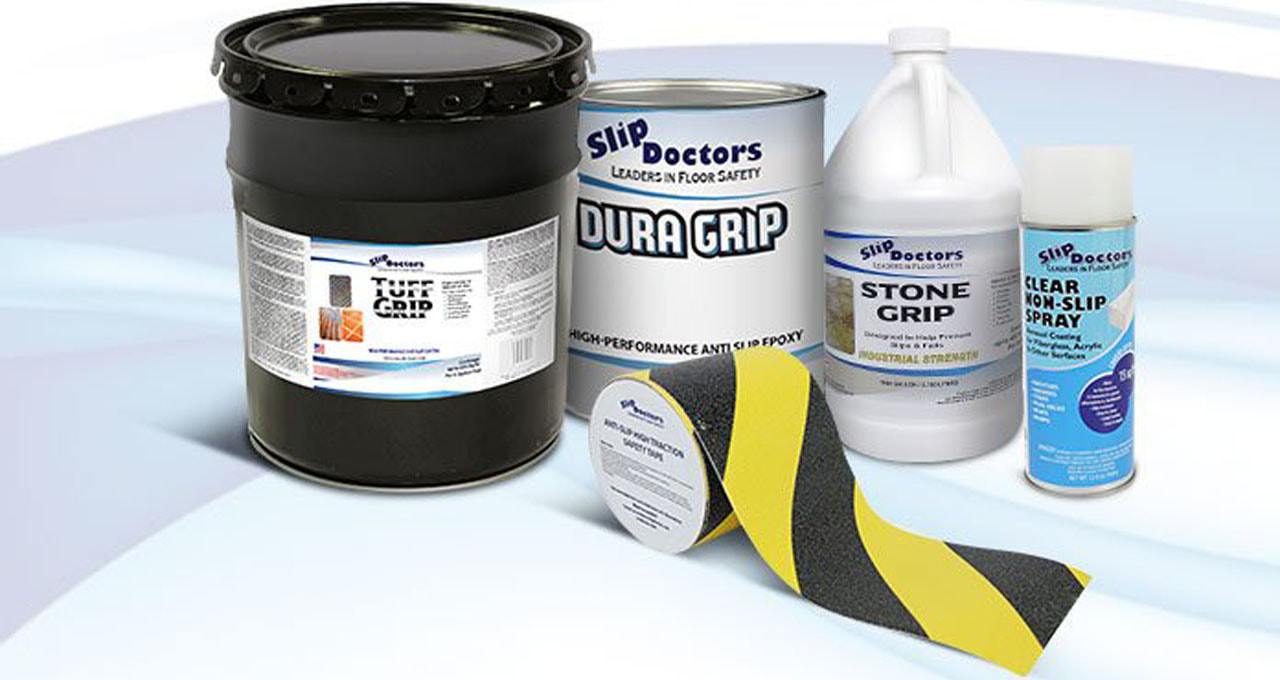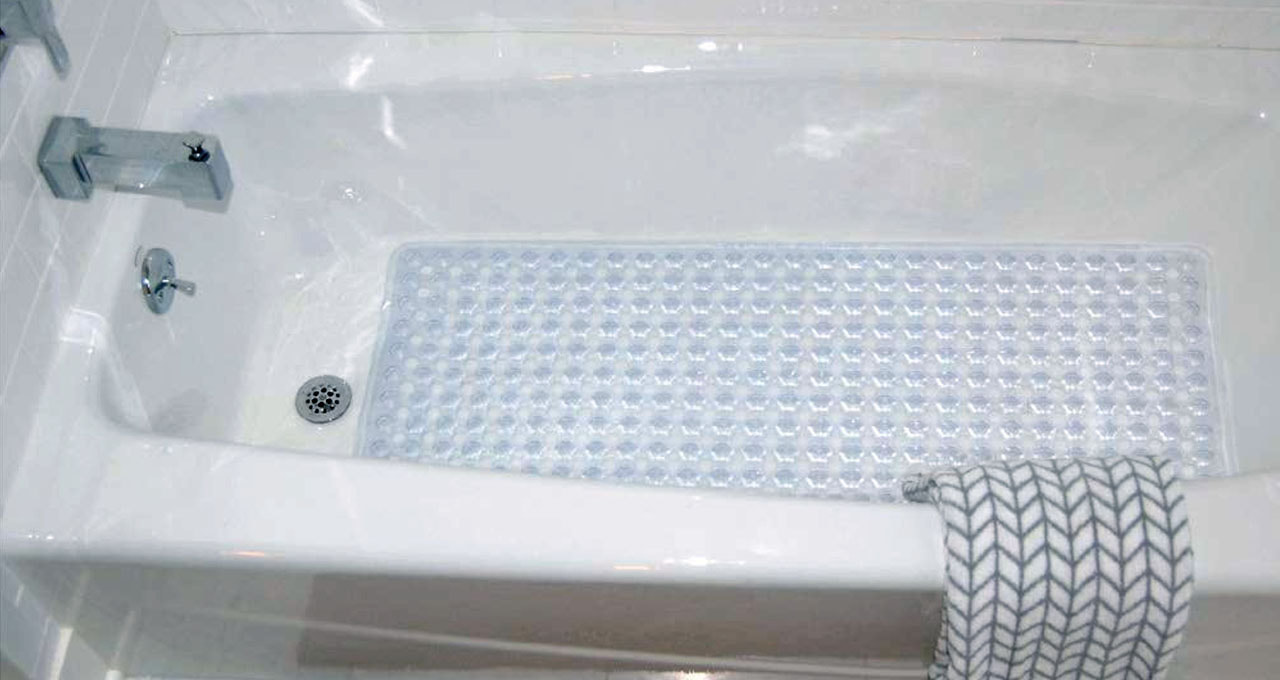|
By Anna Hazard
Introduction
According to the Center of Disease Control, around 235,000 non-fatal injuries are suffered in the bathroom per year within the USA with over 80% directly caused by falling. This is often due to the slippery surface of the room's waterproof flooring. Thus remodeling the bathroom floor for greater safety and accessibility should be a priority when it comes to preparing a household for aging in place, especially as 80% of all falls by those aged 65+ also occur in the bathroom (with an estimate of around 1/3rd of the senior population potentially suffering a fall during the year).
Flooring can be measured with a dynamic coefficient of friction whereby the higher the number, the better the slip resistance. For the bathroom, a coefficient of 0.42 or higher will be needed. While the ceramic tile industry has adopted these friction ratings for safety reasons, other materials are optimally recommended for floor use in the bathroom. Flooring Material
Most pre-installed bathroom floors are tiled and are usually made from ceramic (or potentially porcelain, glass, or marble). This is done as an inexpensive & easy-to-maintain way to create a waterproof surface. However, these types of flooring tend to be very slippery when wet which poses a great falling risk when the bath or shower is in use. In addition tiled flooring can create another tripping hazard if its tiles or connecting grout are uneven.
It's generally recommended that ceramic and other tiling be replaced with textured waterproof sheet vinyl or sheet rubber which will not become slippery when wet. While rubber flooring is generally viewed as the safest choice due to its greater cushioning for shock absorbance during falls, it's also the more pricey option with non-slip vinyl being a good inexpensive alternative. In addition, sheet vinyl flooring comes in a wider array of decorative patterns such as those that mimic hardwood, marble, or ceramic tiling. Sheeting that has been cut to the exact dimensions, size, and shape of the bathroom is recommended over normal tiling as the solid surface creates a more waterproof environment without the potential for moisture to collect at the edges of the tiles (which then can seep into the insulation beneath). The lack of grouting also adds to a more even surface with less potential lips, corners, or edges to trip over. Floor Texture
The bathroom flooring, both within its main section as well as in its bathing or shower area, should have a textured surface in order to help prevent slippage. Generally it's best to have a non-skid surface directly molded into the floor and bottom of the bath & shower so that extraneous mats and rugs will not be needed (as the edges of the mats as well as the sudden change in surface has the potential of posing its own tripping hazard).
If the floor of the bathroom is not naturally textured, then a slip resistant treatment is highly recommended. This would include the addition of gritty no-slip paint or other coatings with a friction coefficient of at least 0.42 or higher as well as adhering heavy duty anti-slip strips directly to the floor. Additional Flooring Options
If the tub or shower does not have a non-skid textured surface, then non-skid rubber mats, waterproof treads, or shower strips made specifically for bathing areas will need to be added to the floor surface. Care must be taken that the mats or strips are tightly bonded directly to the surface so that they don't pull free or bunch up, which would then pose their own tripping hazard.
If the general floor area of the bathroom is not comprised of waterproof textured vinyl or rubber, then it may be necessary to have non-skid, low threshold bathmats in potential slippery sections where moisture might collect on the floor. This would include the entrance & exit of the tub or shower as well as the front of the sink. These bath mats should be low pile and on the thinner side with preferably sloped edges to help mitigate the potential of tripping over the mat threshold due to the change in surface height. The mats should be slip resistant with rubber backing that fastens directly to the floor using anti-slip rug tape (preferably the type rated for use in the bathroom or other moist areas) to make certain that the rug will not easily bunch up or slide around during use. View the Rest of the Series
Part 1 - Introduction
Part 2 - Exterior Part 3 - Landscaping & Gardens Part 4 - Patio, Porch, & Deck Part 5 - Garage & Carports Part 6 - Entrances, Exits, & Thresholds Part 7 - Exterior Steps & Ramps Part 8 - Threshold Lighting & Windows Part 9 - Interior Doors & Halls Part 10 - Interior Steps & Staircases Part 11 - Interior Stairlifts Part 12 - Interior Elevators Part 13 - Interior Lighting Part 14 - General Interior Flooring Part 15 - Interior Flooring Comparisons Part 16 - HVAC & Energy Efficiency Part 17 - Power, Communications, & Other Interior Systems Part 18 - Living Room Part 19 - Kitchen Layout, HVAC, & Electrical Systems Part 20 - Kitchen Lighting, Flooring, and Sink Faucets Part 21 - Kitchen Countertops & Cabinets Part 22 - Kitchen Refrigerators, Freezers, and Dishwashers Part 23 - Kitchen Ovens, Ranges, Stovetops, and Cooktops Part 24 - Kitchen Microwaves, Blenders, & Food Processors Part 25 - Miscellaneous Kitchen Items Part 26 - Dining Room Layout, Tables, & Other Furniture Part 27 - Dining Room Flooring, Lighting, & Meal Serving Equipment Part 28 - Bedroom Layout & Closets Part 29 - Accessible Beds Part 30 - Bedroom Furniture, Electronics, & Other Accessories Part 31 - Bedroom Flooring Part 32 - Bedroom Lighting Part 33 - Bathroom General Layout Part 34 - Bathroom General Tips for Showers & Tubs Part 35 - Bathroom Accessible Tubs Part 36 - Bathroom Accessible Showers Part 37 - Bathroom Accessible Toilets Part 38 - Bathroom Sinks & Vanities Part 39 - Bathroom Cabinets & Shelving Part 40 - Bathroom Grab Bars Part 41 - Bathroom Flooring Part 42 - Bathroom Lighting Part 43 - Bathroom Ableware - Toilet Aids & General Accessibility Part 44 - Bathroom Ableware - Shower, Bathing, & Grooming Aids Part 45 - Laundry Room Location, Layout, & Spacing Part 46 - Laundry Room Carts, Rolling Hampers, & Chutes Part 47 - Laundry Room Dumbwaiters Part 48 - Laundry Appliances (Washers & Dryers) Part 49 - Laundry Room Cabinets, Shelving, & Countertops Part 50 - Laundry Room Storage & Organization Part 51 - Laundry Sinks, Lighting, & Flooring
0 Comments
Leave a Reply. |
AboutNews updates, tips, and guides on senior care, senior health, stress relief and a host of other caregiving related topics from the professionals at Ella Stewart Care. |






 RSS Feed
RSS Feed
